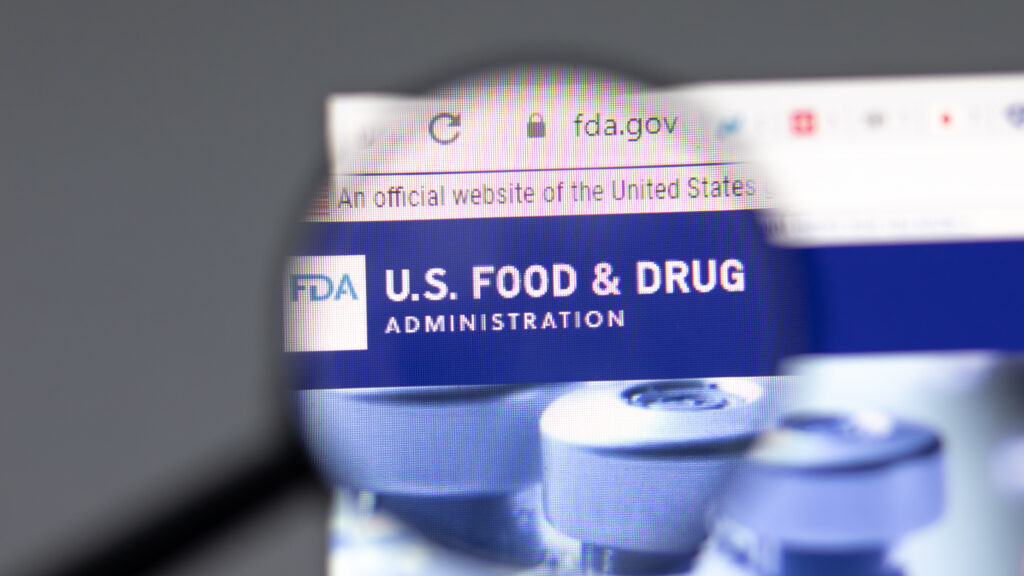Want to stay on top of the science and politics driving biotech today? Sign up to get our biotech newsletter in your inbox.
Good morning, everyone. Damian here with a look at some renewed interest in a yesteryear biotech craze, news of an FDA flex, and a dive into the science of vaccinology.
advertisement
The need-to-know this morning
- Boehringer Ingelheim and Zealand Pharma said their experimental drug for obesity also succeeded in a mid-stage study involving participants with the fatty liver disease called MASH.
- Celldex Therapeutics and Sanofi presented new data from mid-stage studies of their respective treatments for chronic hives.
- Xolair, an asthma and allergy medicine marketed by the Genentech unit of Roche, reduced allergic reactions in children with food allergies, including peanuts.
The MASH goldrush is back on
For years, the prevalent fatty liver disease known as NASH was that rarest of pharmaceutical opportunities: a massive potential market without a single approved treatment. The industry’s interest seemed to subside after a metronomic series of clinical disappointments, but in 2024, the disease now called MASH is back in the spotlight thanks to a boom in obesity research.
As STAT’s Elaine Chen reports, about one-fifth of the 105 treatments in development for obesity are also being studied in MASH, short for metabolic dysfunction-associated steatohepatitis. It makes sense scientifically, as patients who develop MASH typically progress from obesity. And the commercial potential remains clear, as 1.5% to 6.5% of U.S. adults are estimated to have MASH, meaning any drug that reaches even a fraction of those patients would be a multibillion-dollar product.
What remains unclear is just how the market might shake out. Medicines like Wegovy and Zepbound, which lead to significant weight loss, have demonstrated promising effects on liver fat, helping some patients achieve MASH resolution. But they might not improve the liver scarring that accompanies more advanced cases of the disease, leaving room for novel therapies with different biological targets.
advertisement
Alnylam’s plea patience is working out
Shares of Alnylam Pharmaceuticals fell about 10% earlier this month after the company made some 11th-hour changes to an all-important Phase 3 study. The company has spent the last week or so making its case for why those late-inning amendments are not cause for alarm, and, at least according to the stock price, it’s working.
As STAT’s Adam Feuerstein writes, Alnylam has almost fully recovered since it first disclosed a delay to Helios-B, a study testing whether the RNA-interference therapy called vutrisiran can improve the lives of patients with the progressive heart disease ATTR-CM.
According to CEO Yvonne Greenstreet, the company made its decision after seeing longer follow-up data on the outcomes of people with ATTR-CM treated with another Alnylam medicine called patisiran, along with late-stage study results presented by BridgeBio on its competing treatment for ATTR-CM called acoramidis. “Everything we’ve seen actually makes us very confident about the study delivering its outcome,” Greenstreet said.
The FDA isn’t afraid to yank a disappointing drug
The FDA is rescinding its approval of a blood cancer treatment from the Swedish firm Oncopeptides, the agency’s first exercise of a new authority that allows regulators to more quickly withdraw drugs that have not lived up to their promise.
The decision concludes a seven-month process that began after Oncopeptides’ drug, which won accelerated approval in 2021, failed in a Phase 3 study meant to confirm its observed benefits. The FDA moved to rescind approval of the drug, called Pepaxto, and Oncopeptides appealed. In a letter issued Friday, Peter Marks, head of the agency’s biologics division, overruled the company’s arguments and ordered the withdrawal of Pepaxto. In a statement, Oncopeptides said it will “thoroughly assess the decision.”
The move comes amid increased scrutiny of the FDA’s accelerated approval program, which allows novel drugs to reach the market based on preliminary signs of efficacy while larger trials continue. Public health advocates have argued that drug companies abuse the system, pointing out that it takes nearly four years for ineffective drugs to have their accelerated approvals withdrawn.
The next flu vaccines will look familiar
The World Health Organization issued recommendations Friday on which flu viruses the next vaccine should target. There was good news for manufacturers: People in the Northern Hemisphere will get the same flu shot next winter that people in the Southern Hemisphere are getting to prepare for their upcoming flu season. In fact, the component of the vaccine that targets the flu B Victoria lineage has been unchanged since the 2022 vaccine for the Southern Hemisphere.
Why is this good for manufacturers? Learning to optimize growth of a new virus can take time. Since they have worked extensively with these viruses, manufacturers will know how to grow them.
In its report, the WHO reiterated it would like manufacturers to make trivalent vaccines, containing only viruses targeting influenza A viruses H1N1 and H3N2 plus B/Victoria. But it acknowledged some national regulatory agencies may not be ready to move away from quadrivalent formulations, which also target seemingly extinct B/Yamagata viruses.
The Food and Drug Administration’s vaccine advisory committee will meet March 5 to formalize the formulation for next winter for the U.S.
More reads
- Amgen’s rheumatoid arthritis drug Enbrel targeted for first-in-the-nation price limit in Colorado, STAT
- U.S. bill on Chinese biotech firms may be more ‘narrowly tailored,’ lawmaker says, Reuters
- Oregon suspends a portion of its drug transparency law found to be unconstitutional, STAT

